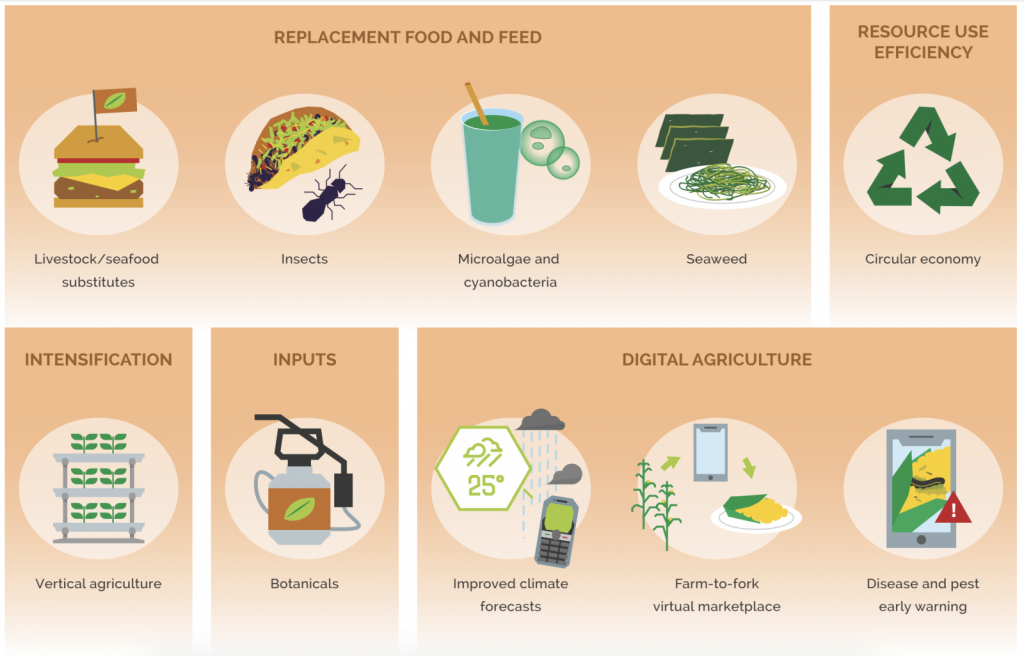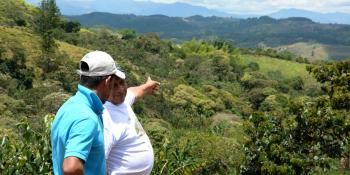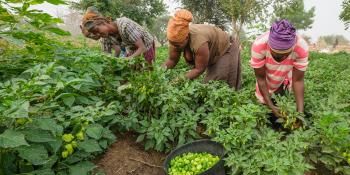New technologies can be disruptive; maximizing the positives for farmers

There’s broad consensus that current food systems are at increased risk of failing to produce the quantities of food needed to feed a growing world population in a way that satisfies nutritional needs, benefits everyone equally and equitably, and minimizes the negative impacts of food systems on the environment and the natural resource base. Our food systems have evolved and adapted over millennia to absorb inherent risks in the system. Current challenges to our food system are driven by having to adapt more rapidly than ever before, owing to an unprecedented combination of climate, population and environmental impacts. There is less consensus about what actions we should take to close the production gap. We need more food to be produced, and different food, and there are myriad frameworks and agendas proposed as to how this gap can be addressed. Given the scale and urgency of the food system challenge, incremental change may not be enough.
Join the discussion on “Transforming innovation systems to deliver impact at scale,” part of the A new era for food and climate virtual event on 25 June. |
|---|
Prompted by a conversation with the Bill and Melinda Gates Foundation, a new study led by the Australian Commonwealth Scientific and Industrial Research Organisation (CSIRO) and the CGIAR Research Program on Climate Change, Agriculture and Food Security (CCAFS) investigated 75 emerging and farther-out technologies with potential to transform the food system. These technologies span the entire food value chain, from production and processing to consumption and waste management. Some we are already familiar with, such as farmers receiving seasonal weather forecasts and storm-pest-disease early warnings on basic mobile phones. Others require a bigger stretch of the imagination; for instance, nitrogen-fixing cereals that do not need fertilizer, or feed for livestock produced from seaweed, insects or human sewage.

Figure 1.10 innovative technologies for food systems transformation.
Human history has been punctuated by transformative agricultural and food systems innovation: the plow, the refrigerator, synthetic nitrogen fertilizers, to name just three. Some of these have been highly disruptive to the existing order of things. The disruption that technology may cause can be hugely beneficial—think of drudgery-reducing devices such as mechanized harvesters. At the same time, disruption may lead to big social changes, in power relations, shifts in labor, or changes in leisure time available, for example. Almost any adjustment to a new reality takes time, and vested interests may not be keen to upset the status quo.
Changes in agricultural technology may not always be beneficial to small-scale farmers, and access to new technologies may be highly unequal. We still lack many details about the likely direct and indirect effects of technological innovation on food system actors, but we need to be able to provide safety nets for those who need them and where possible consider the downside of introducing technological innovations. This involves asking questions such as: Do women and marginalized populations have equal access? Are we contributing to the digital divide? What are the risks to already vulnerable populations? How will power dynamics shift? We need to promote technology innovations with urgency yet with the thoughtfulness to address unforeseen negative consequences.
Successful technological innovation needs several enablers: not least, transparency to safeguard against unintended negative social and environmental impacts; appropriate policies and regulations will be needed to create incentives for change and to ensure the benefits are distributed fairly; and above all, creating the social trust necessary for new technologies to go to scale quickly and equitably.
Technological innovation is not a one-time event."
Technological innovation is not a one-time event, so it’s important to look at technological innovation from a systems perspective, ensuring there is a continual and sustainable pipeline of innovations that are fit-for-purpose for small-scale farm households, thereby allowing them to more quickly adapt to changing environmental conditions and market demands. The public sector has much to learn from the private sector about efficient and effective methods for comparing, assessing and prioritizing different alternatives, even though the metrics are different: impact for the public sector, and revenue and profit for the private sector. Ultimately, benefits to society at large are possible and return on investment a common cross-cutting calculus to be made to ensure sustainability. Innovation in both sectors needs to be informed by early identification of the likely “winner” technologies that stand out from the pack so that scarce resources are directed to further development and scaling out of the best bets—something the private sector is often better equipped to do.
The fact is, clinging to “business as usual” may conflict with the necessity of fixing up our food systems. John Cage, the American composer, said: “I can’t understand why people are frightened of new ideas. I’m frightened of the old ones.”
Prioritizing investments in technology innovation for food systems is a necessity for meeting the global food production and environmental challenges—it’s time to thoughtfully embrace the new.
This blog is part of a series for the Transforming Food See details and register here. |
Read more:
- Journal article: Innovation can accelerate the transition towards a sustainable food system
- Report: GSMA: The Mobile Gender Gap Report 2020
- Report: Scaling up Disruptive Agricultural Technologies in Africa
- Report: The Digitalisation of African Agriculture Report 2018-2019
- Website: Transforming Food Systems Under a Changing Climate
Photo: IRRI




